I got this drum from my good friend and fellow collector/drum historian
Harry Cangany. Harry was thinning out his collection and we struck a deal.
1945-1946 SLINGERLAND 4 x 14 8 LUG WMP RADIO KING MODEL

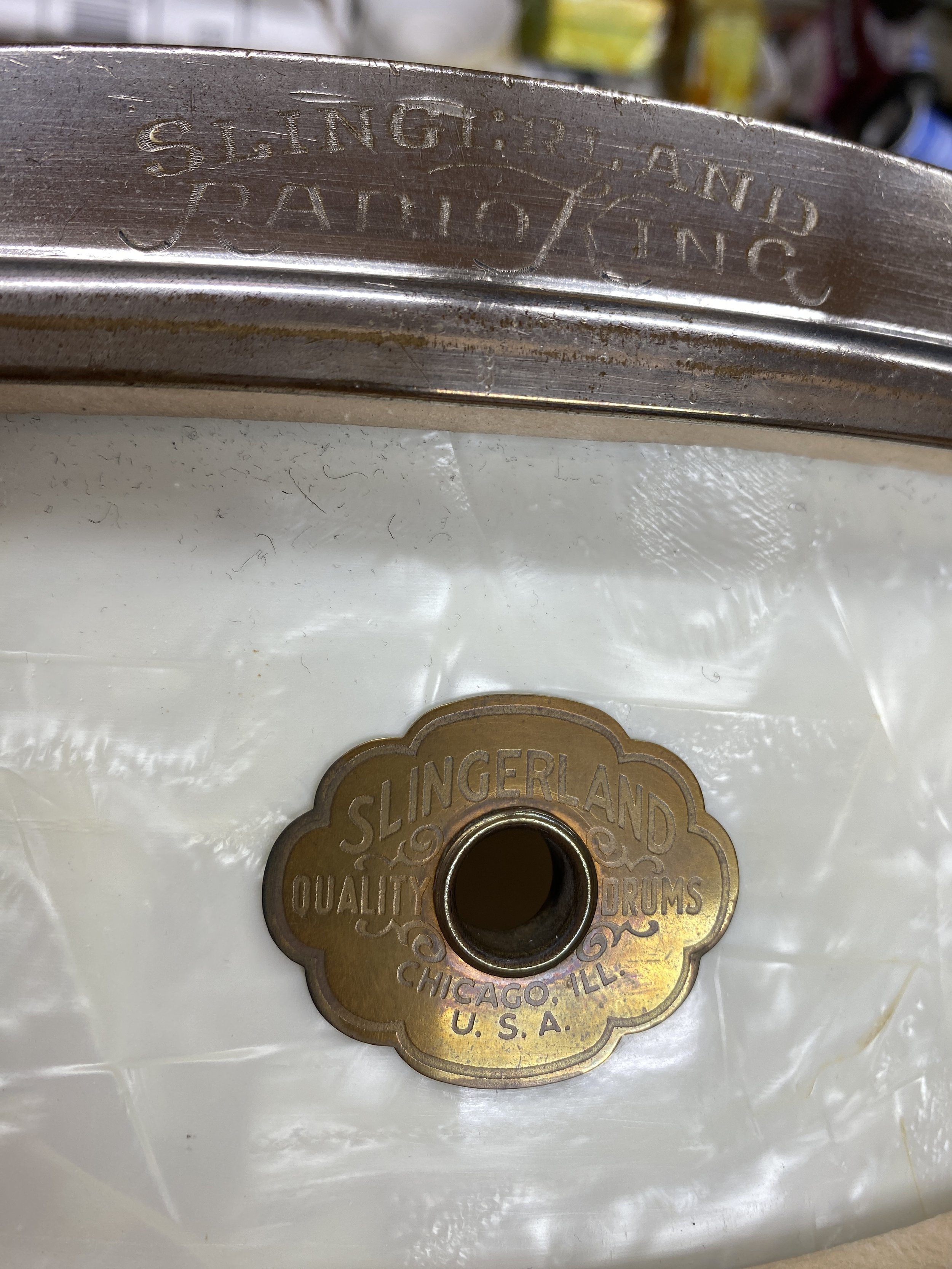
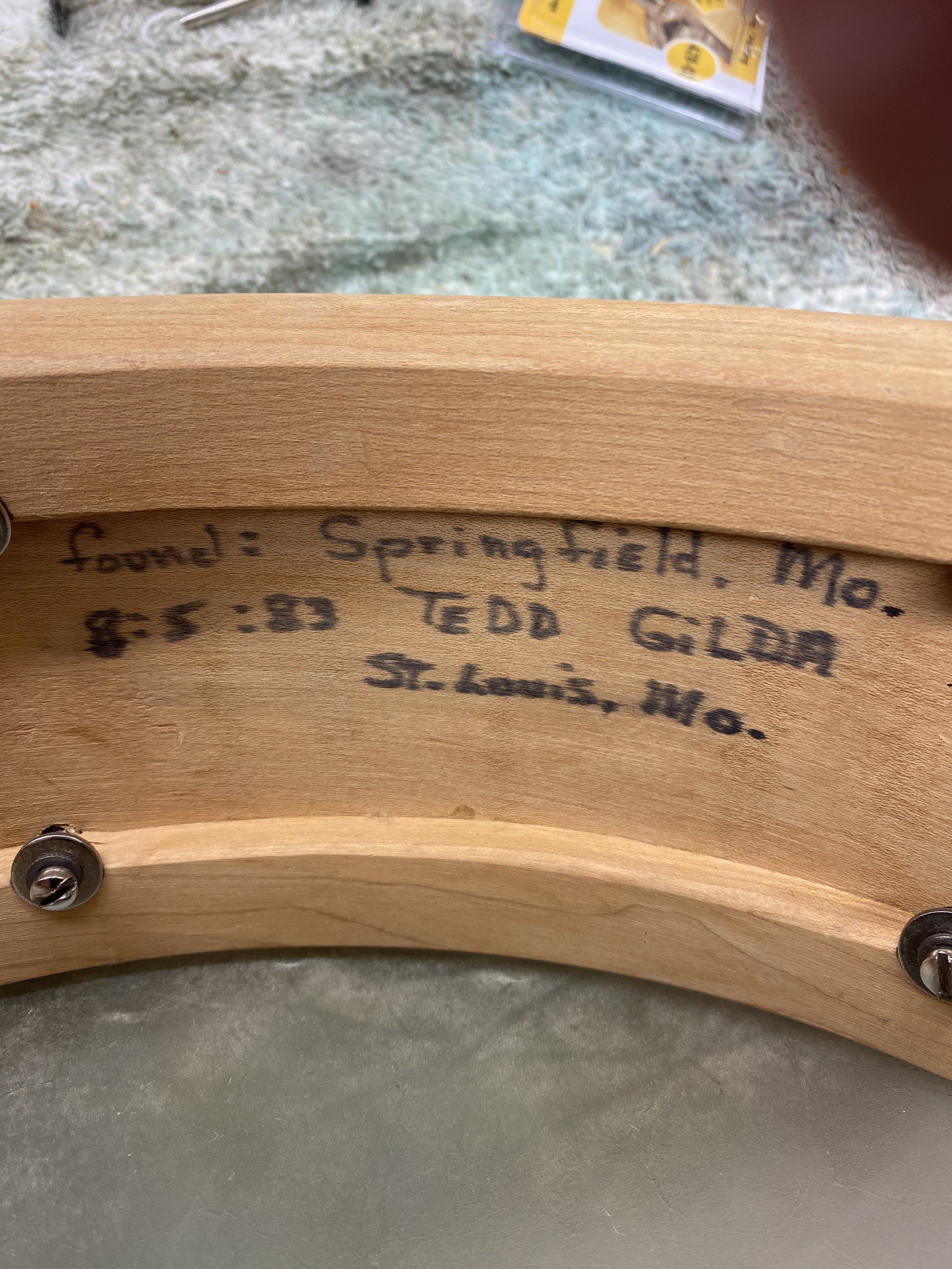
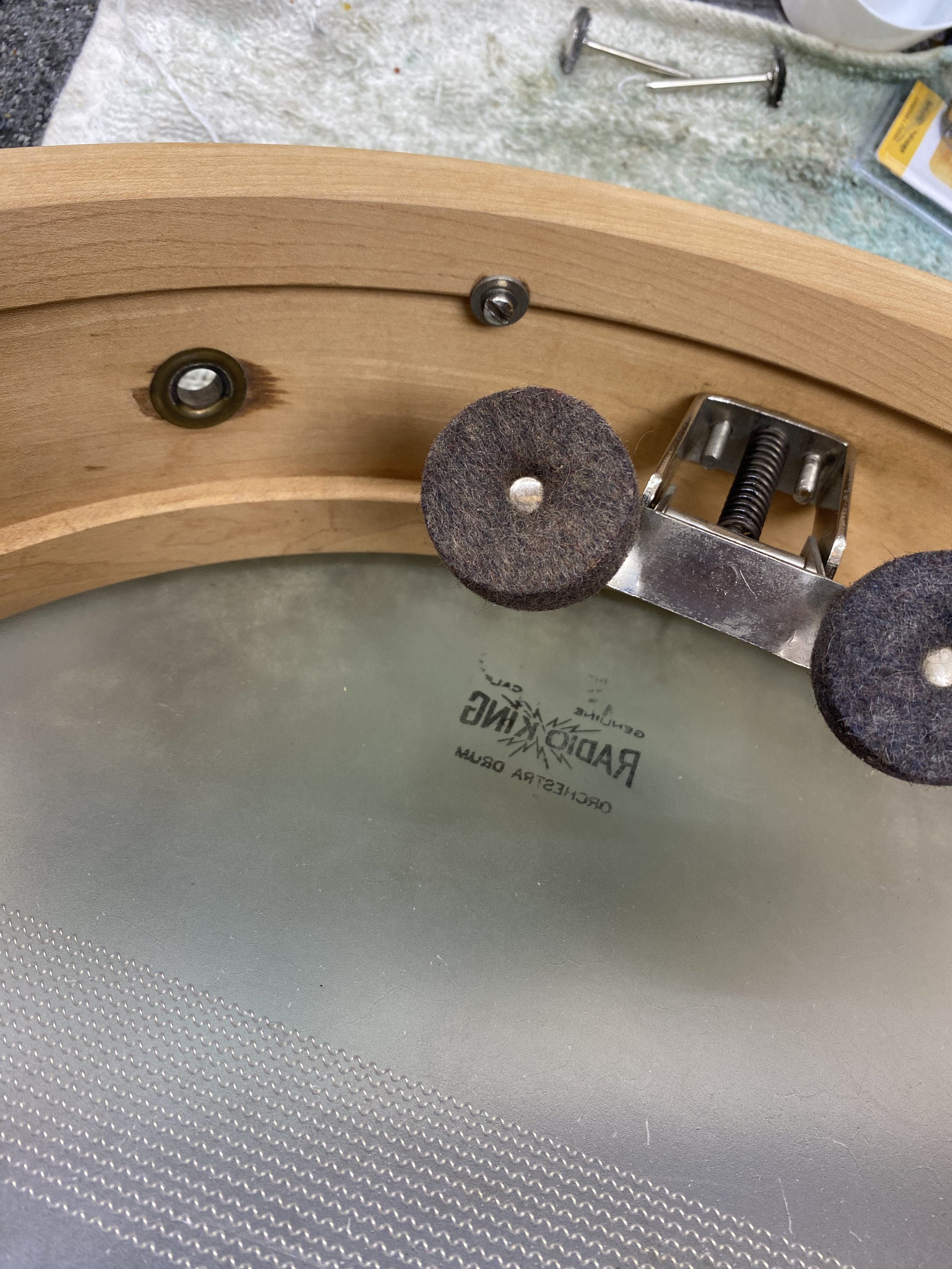
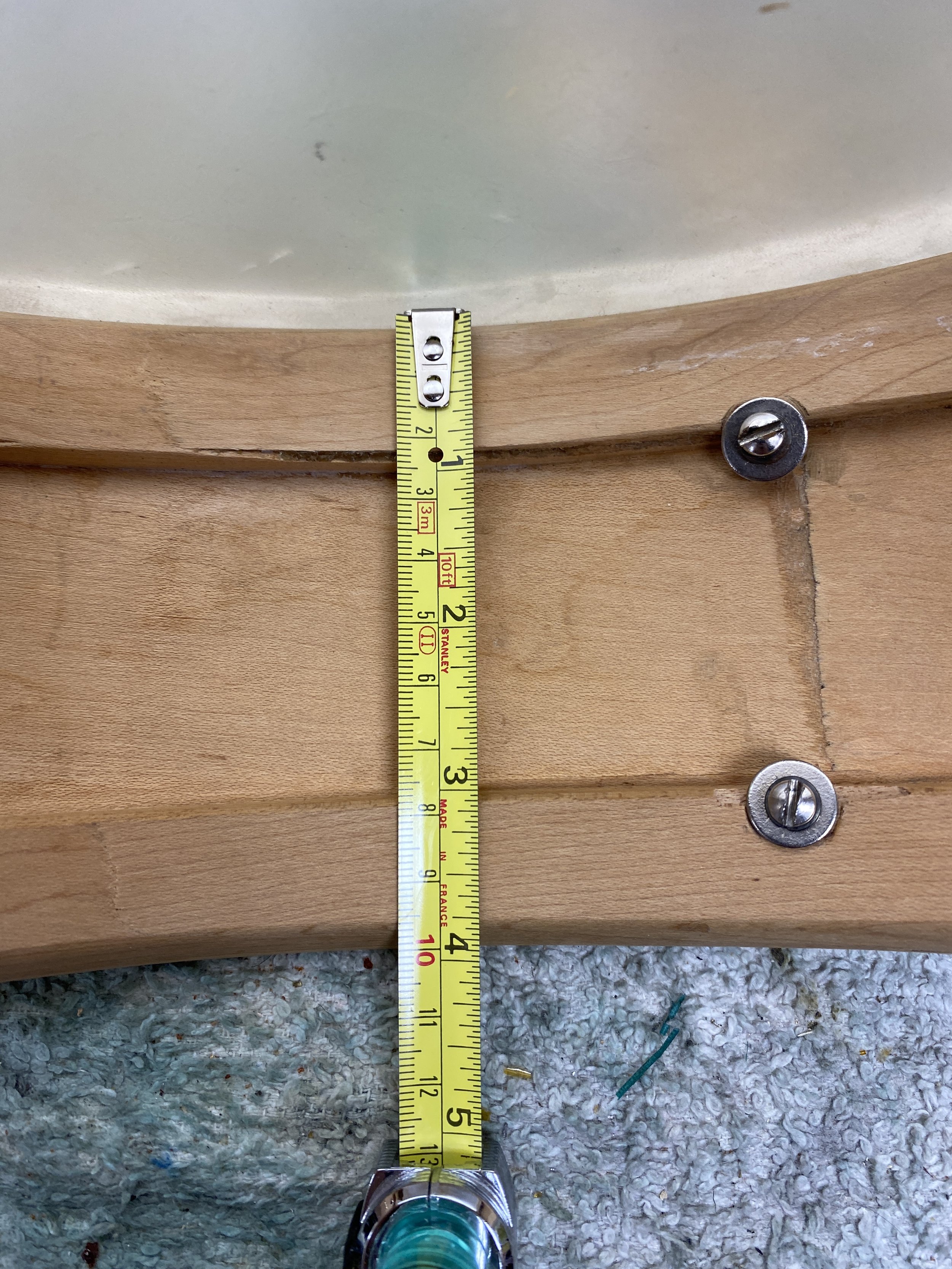
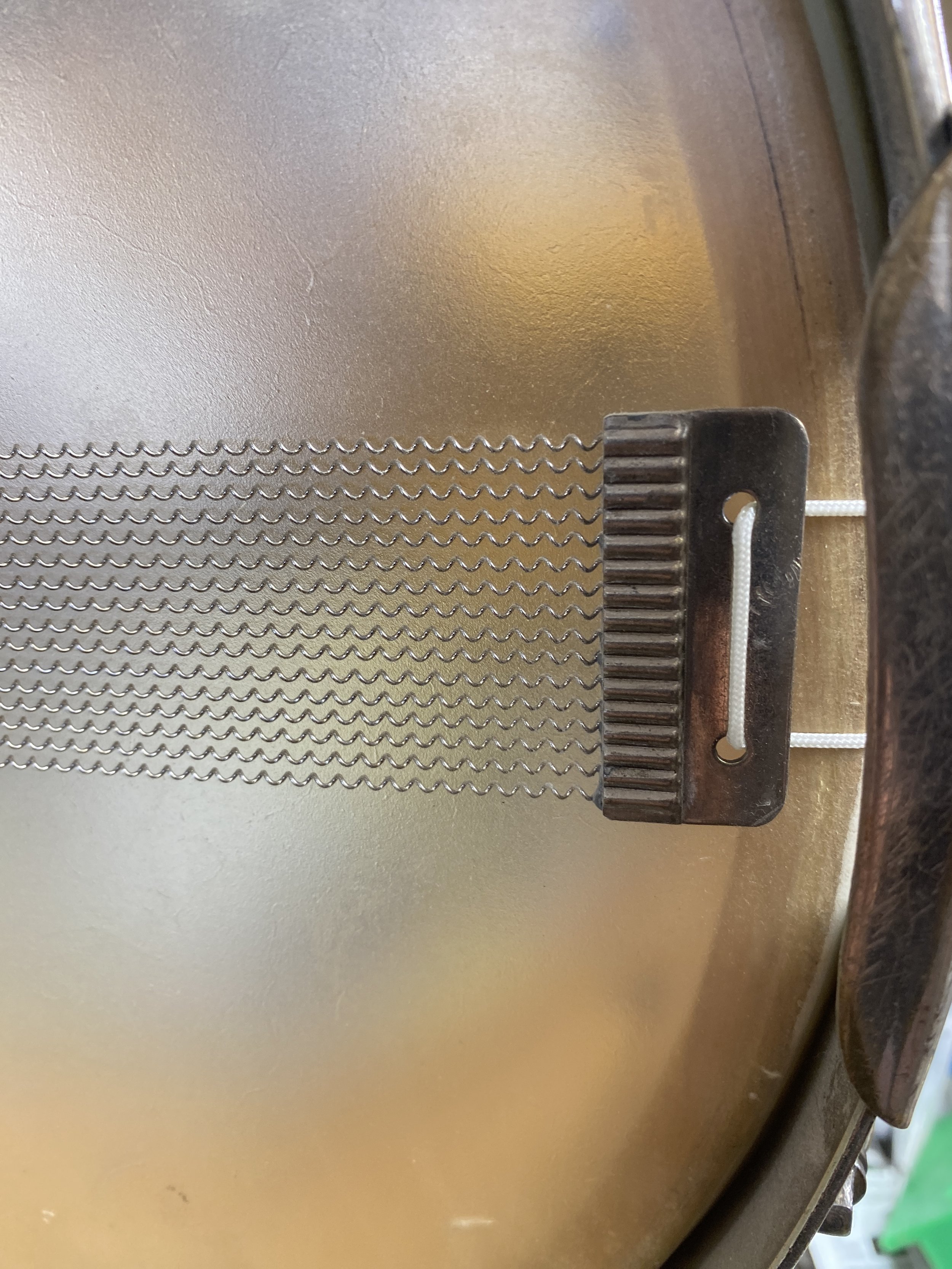
Drummer community & drum marketplace
The first vintage & Custom Drum Magazine, since 1988
I got this drum from my good friend and fellow collector/drum historian
Harry Cangany. Harry was thinning out his collection and we struck a deal.
When I saw that this drum had been listed on DrumSellers, it was so striking and beautiful that I requested one for review.
Read moreJohnny created a lot of interest back in the early 2000s with his acquisition of a stash of 600 + year old birch that had been discovered at the bottom of Lake Superior.
Read moreThere were very few Super Ludwigs produced with WFL badges which makes them very rare. The Transition Badge, as known by collectors, had the Ludwig logo on it and was used in 1958 and 1959.
Read moreThe serial number schemes and paper label designs used with Gretsch guitars and banjos differed from those used with Gretsch drums. On a few occasions in the early 1970s, drum serial numbers and drum abels appear on guitars and banjos and guitar/banjo serial numbers and labels appear on drums. This article is written for the vintage guitar, banjo and drum communities so that this fascinating interaction between these areas of Gretsch manufacturing is more widely understood.
Read moreI would like to introduce you to my stunning vintage 1960s Rogers little Jazz Bop Set!
18” Bass Drum, 14” Floor Tom and 12” Tom. I added another 14” floor and the matching snare in some of the photos from two of my other sets just for a WOW-factor.
I stumbled upon this set only two weeks ago and I am so thrilled I did, it has been a search many years in the making.
I'm an architect and custom builder and have a difficult time restoring stuff. I have to customize everything and make it express my individuality. For instance, my daily driver is a hot rod 1952 Willys pick up truck with a custom extended cab and a fuel injected 454.
Read more
How to read those awkward across the bar line figures.
Read moreHere we have a nice example of an early 1950’s Leedy and Ludwig Knob Tension kit. This unique outfit first appeared in the 1951 catalog and made its last appearance in 1953.
Read moreMy Top Dozen (or so) Drum Set Exercises
Read more
Black Friday thru New Year’s Sale
Read moreThe following etude features eighth triplets and parts of eighth triplets.
Read moreRichard Best, who is one of our NSMD columnists, has invented a nifty little drummer’s helper device that is designed to loosen or tighten wing nuts. I keep one in my stick bag now
Read more
First of all, let me say that Joel Selvin is a fantastic writer and his research of Jim Gordon is as thorough as can be. He even had interviews and comments from Jim’s immediate family who had avoided interviews before Selvin. This book is so good that I had to read the book in one sitting. I couldn’t put it down. I had read articles about Gordon for years, but Selvin unearthed details about the man’s life, career and mental illness that are new to me.
Jim Gordon was one of my favorite drummers when I was growing up and learning to play the drums, even though I did not know who was playing the drums on all those hit records that would catch my ear. In the sixties, “Mary, Mary” by the Monkees was the first song I heard on the car radio that had a simple funky boogaloo beat. I was in the seventh grade and had just gotten my first drum set. As soon as I got home, I played that one bar groove for weeks. There were many more Gordon licks that I learned without knowing who the drummer on the recording was.
Gordon was a protégé of Hal Blaine. Jeff Porcaro, Jim Keltner and Andy Newmark all looked up to him. He had a certain happy swagger, bouncy swing in hia style that set him apart from other rock drummers of the time. He had a knack for knowing just what to play on songs in the recording studios. He elevated the music.
Most drummers know the story of Jim Gordon becoming the top dog studio drummer in Hollywood who was later tortured by schizophrenia and the voices in his head that told him to kill his mother when he was 38. He spent the rest of his life in prisons. He died in March of this year. I am not going to dwell on his mental illness in this review. But Selvin documents the chronology of Gordon’s music career and the simultaneous growth of his undiagnosed schizophrenia during those twenty years of his career. Selvin makes it quite clear that the voices in Gordon’s grew over time to become in charge of his life and that he was living in two worlds; the real world where he was in charge of his actions, and the unreal world of the voices that, toward the end, commanded his every action.
It is tough for many to separate the genius of any artist’s body of work from his bad behavior criminal acts. My personal opinion is Gordon’s body of work will stand the test of time and his contributions will remain important in the development of how we play the drum set. That first part of his life is something we drummers dream of.
It is, of course, a shame that the schizophrenia was undiagnosed and that the medical treatment at the time had not advanced to what it is now.
I’m not going to list the great records that he played on. There is an extensive list of them at jimgordondiscography.blogspot.com , but highlights include the Everly Brothers (at age 19 in 1964), Merle Haggard and the Beach Boys as part of the “Wrecking Crew” (1960), Neil Young (1967), Connie Francis (1968), Ricky Nelson, Linda Ronstadt, Ella Fitzgerald, Johnny Rivers, Tiny Tim (1969), Gordon Lightfoot, Billy Preston, Randy Newman, Leon Russell, Joe Cocker – Mad Dogs and Englishmen, George Harrison, Eric Clapton, Derek and the Dominos (1970)
During and after the pivotal year of 1970, Gordon joined Derek and the Dominos and wrote the piano ending to Layla. He spent much time in England recording with the British Rock Royalty including Traffic (Low Spark of High Heeled Boys 1971), John Lennon, Carly Simon, Harry Nillson, Dr. John, and Barbara Streisand. Frank Zappa (the Grand Wazoo 1972), The Incredible Bongo Band (including Apache, The most sampled record by hip hop djs 1973) , Tom Petty ; the list goes on and on.
It was during his stints with Derek and the Dominos, and Traffic that he started using heavy drugs and alcohol to escape the voices in his head.
No label albums are credited after 1980. It was during this period and after that Gordon was experiencing full blown schizophrenia, had become paranoid, withdrawn and sullen, doing lots of drugs and alcohol to try and drown out the voices and was in and out of mental hospitals. He quit eating, could not sleep and became a hermit in his house. Only after his arrest for murder was Gordon properly diagnosed with schizophrenia. It is, of course, a shame that the schizophrenia was undiagnosed and that the medical treatment at the time had not advanced to what it is now.
In 1983 he committed the crime and was sent to prison for 16 years to life. He spent the rest of his life in prisons and it was years before medicines were created that were adequate drug treatment for his schizophrenia. I personally had correspondence with a woman who exchanged letters with him. She said he did not play drums anymore and was not interested in his former life as a rock and roll star, but he started playing drums in the prison band late in his life.
Selvin’s book has cleared up a lot of questions I had about Jim Gordon’s music career and his mental illness. It’s a very good read and Selvin delves deep into Gordon’s drumming style and his genius in the recording studio.

The fifteen commandments of practicing
Of course there are no rules, other than just do it. But there are good ways to practice and not so good ways. My goal for practice time is that it will invariably lead to the development of sound playing and sound playing habits. And it has to be fun.
Read moreThus my Rosebud: Like Citizen Kane’s sled named “Rosebud”, I have found the drums of my youth.
Read moreThe 1st Generation of Super Ludwigs were made from 1925 – 1935 and they made 5 different sizes.
Read more
Apparently, being one of the greatest Rock drummers of all time just wasn’t enough for Dino Danelli. Beginning in 1965, Dino began to experiment with painting and drawing. Soon afterwards, his incredible talents led to the creation of numerous album cover designs for the Rascals, Fotomaker, and Little Steven Van Zandt.
Read moreFor a brief period of time Craviotto Drums partnered with C & C drums to offer a short run of snare drums and drum sets in various shades of real abalone shell material that was applied to the solid maple Craviotto shells.
Read more